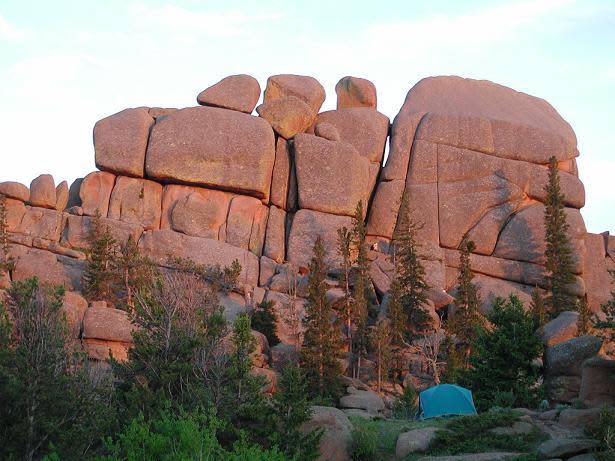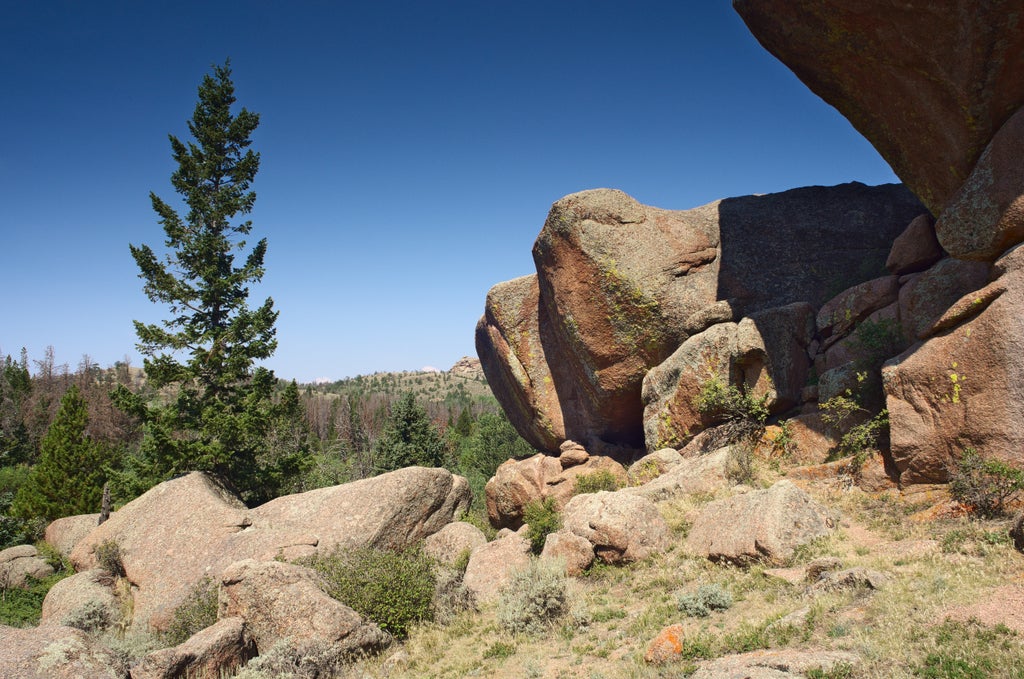
Echoes of the Plains: A Journey to the Cheyenne Nation Historical Village
Stepping onto the grounds of the Cheyenne Nation Historical Village is more than just visiting a historical site; it’s a profound immersion into the heart and soul of a resilient people. For the discerning traveler seeking depth beyond mere sightseeing, this village offers an unparalleled opportunity to connect with the living history, vibrant culture, and enduring spirit of the Cheyenne Nation. Forget the superficial; this is where the stories of the Plains come alive, not just through exhibits, but through the voices, traditions, and very presence of the Cheyenne people themselves.
From the moment you approach, the sprawling landscape, often echoing the very plains where the Cheyenne once thrived, sets a contemplative tone. Unlike many static museums, the Cheyenne Nation Historical Village is designed as a dynamic, living tribute. Its design, often centered around a traditional encampment layout, immediately transports you. Here, the meticulously reconstructed tipis and other traditional dwellings aren’t just display pieces; they are educational tools, portals to a past that informs a powerful present.
A Living Tapestry of Culture and History

The village is structured to provide a comprehensive narrative, weaving together the pre-contact era, the challenges and resilience faced during the westward expansion, and the vibrant contemporary life of the Cheyenne Nation. Your journey typically begins with an introduction to the deep spiritual connection the Cheyenne hold with the land, the buffalo, and the Creator. Knowledgeable guides, often direct descendants of Cheyenne ancestors, share oral histories passed down through generations. This is crucial; these aren’t just facts from a textbook, but personal narratives imbued with emotion and pride.
One of the most captivating aspects is the traditional encampment. Walking among the towering, expertly crafted tipis – made from buffalo hide or canvas, depending on the historical period being represented – offers a tactile understanding of Cheyenne ingenuity. You’ll learn about their construction, their symbolism, and how they provided warmth in winter and cool in summer. Often, specific tipis are dedicated to different aspects of daily life: one might demonstrate food preparation (the grinding of corn, drying of meats), another beadwork and quillwork, and yet another, storytelling and ceremonial practices.
Immersive Experiences: Beyond Observation
The beauty of the Cheyenne Nation Historical Village lies in its emphasis on interaction. Visitors aren’t just observers; they are encouraged to participate, learn, and engage.

- Craft Demonstrations: Witness the intricate art of beadwork, a skill passed down through generations, where tiny glass beads are transformed into stunning patterns on leather and cloth. Observe the labor-intensive process of quillwork, an ancient art form using porcupine quills, or the tanning of hides, showcasing the sustainable use of every part of the buffalo. Often, workshops are available where you can try your hand at simple crafts, creating a tangible memento of your visit.
- Traditional Foods: A culinary journey awaits, offering a taste of authentic Cheyenne cuisine. Imagine savoring buffalo stew, rich and hearty, or freshly baked frybread – a more modern staple, but deeply integrated into contemporary indigenous cuisine. These meals are often prepared over open fires, adding to the immersive experience and providing another layer of sensory connection to the past.
- Storytelling and Music: Gather around a central fire, or within a large tipi, as elders and storytellers share myths, legends, and historical accounts. These oral traditions are the backbone of Cheyenne culture, preserving wisdom, humor, and critical lessons for future generations. The haunting melodies of traditional flutes and the rhythmic pulse of drum songs fill the air, creating an atmosphere that is both moving and deeply spiritual.
- Horse Culture: The Cheyenne were renowned horsemen, and the village often highlights this integral relationship. Demonstrations of traditional riding techniques, the importance of horses in hunting and warfare, and the deep bond between the Cheyenne and their steeds provide fascinating insights into their way of life on the open plains.

Unflinching Honesty: The Historical Narrative
While celebrating the rich cultural heritage, the village does not shy away from the darker chapters of Cheyenne history. Exhibits and narratives address the profound impact of European expansion, the devastating buffalo slaughter, forced relocations, and the tragic events like the Sand Creek Massacre and the Washita River Massacre. This unflinching honesty is vital. It’s presented not with bitterness, but with a profound sense of resilience, survival, and a commitment to ensuring these lessons are never forgotten. This part of the journey is often challenging but ultimately deeply moving, fostering a greater understanding of the injustices faced and the incredible strength demonstrated by the Cheyenne people. It underscores the importance of historical accuracy and the ongoing fight for recognition and justice.
Contemporary Vibrancy: Connecting Past to Present
Crucially, the Cheyenne Nation Historical Village is not just about the past; it’s a testament to the vibrant present and hopeful future of the Cheyenne people. You’ll encounter contemporary Cheyenne artists, entrepreneurs, and community leaders. Discussions often touch upon current challenges facing the nation, efforts to revitalize the Cheyenne language (Tsetsêhestâhese), and initiatives to preserve traditional knowledge for younger generations. This connection between past and present is what makes the village truly special – it’s a living, breathing culture, not a relic.

Planning Your Visit: Location and Logistics
The concept of a singular "Cheyenne Nation Historical Village" is an ideal representation of what numerous cultural centers, museums, and tribal initiatives across the Plains states (like Oklahoma, Montana, and Wyoming, where Cheyenne people historically lived and continue to reside) collectively offer. When planning a visit that aims to capture this comprehensive experience, it’s essential to research specific tribal cultural centers, such as those associated with the Northern Cheyenne Tribe or the Cheyenne and Arapaho Tribes. These institutions, often found on or near reservation lands, are the real-world manifestations of this "historical village" concept, each offering unique insights into local history and culture.
- Location: While a unified "Cheyenne Nation Historical Village" doesn’t exist as a single, centralized entity, numerous sites across the historical Cheyenne territories – primarily in Montana, Oklahoma, Wyoming, and Colorado – offer rich cultural experiences. Research specific tribal cultural centers, museums (e.g., the Cheyenne Cultural Center in Oklahoma, or the Northern Cheyenne Tribal Museum in Montana), and annual powwows or cultural events.
- Best Time to Visit: Spring and fall offer pleasant weather for outdoor activities. Summer can be hot, but often hosts significant cultural events like powwows, which are incredible opportunities for cultural immersion (check tribal calendars for public events).
- Respectful Conduct: This is paramount. Always ask for permission before taking photos of people or sacred objects. Dress modestly, listen attentively, and approach every interaction with an open mind and respectful attitude. Remember, you are a guest on sacred ground and in a living community.
- Support Local: Purchase crafts and goods directly from Cheyenne artisans and support tribal enterprises. Your tourism dollars directly contribute to the economic well-being and cultural preservation efforts of the Nation.
The Enduring Legacy
A visit to a Cheyenne Nation Historical Village (or the collective experience gleaned from various related sites) is far more than a simple tourist activity. It is an educational pilgrimage, a spiritual awakening, and a profound exercise in empathy. It challenges preconceived notions, corrects historical inaccuracies, and celebrates the enduring spirit of a people who have faced immense adversity with grace and resilience.
You leave not just with souvenirs, but with stories etched in your memory, a deeper understanding of indigenous history, and an immense respect for the Cheyenne Nation. It’s a journey that lingers, prompting reflection long after you’ve departed, reminding you of the power of culture, the importance of history, and the vital ongoing legacy of the Plains people. For anyone seeking to understand the true fabric of America, and the rich tapestry of its indigenous heritage, a visit to experience the Cheyenne Nation’s living history is an absolute imperative.
